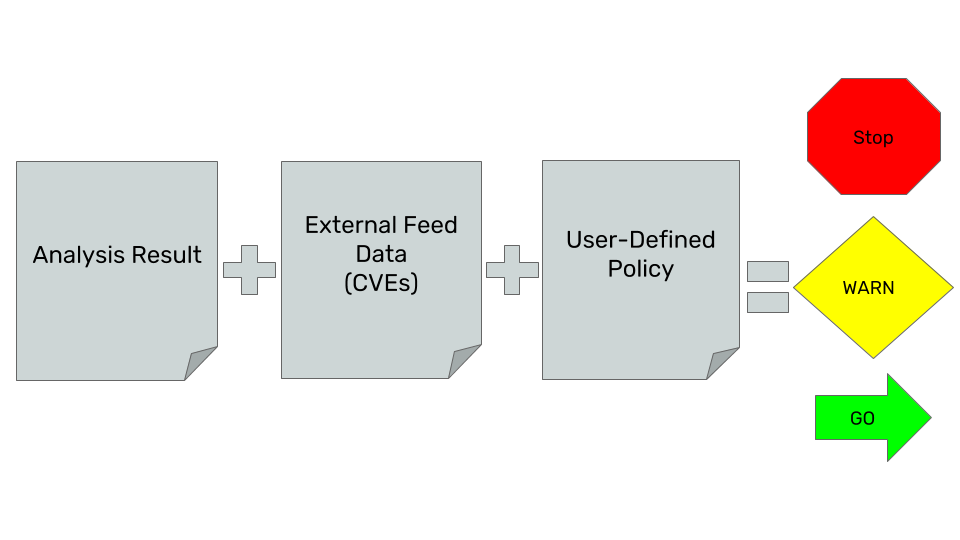Concepts
What is Anchore Engine?
Anchore Engine is an open-source Docker container static analysis and policy-based compliance tool that automates the inspection, analysis, and evaluation of images against user-defined checks to allow high confidence in container deployments by ensuring workload content meets the required criteria. Anchore Engine ultimately provides a policy evaluation result for each image: pass/fail against policies defined by the user. Additionally, the way that policies are defined and evaluated allows the policy evaluation itself to double as an audit mechanism that allows point-in-time evaluations of specific image properties and content attributes.
How does it work?
Anchore takes a data-driven approach to analysis and policy enforcement. The system essentially has discrete phases for each image analyzed:
- Fetch the image content and extract it, but never execute it
- Analyze the image by running a set of Anchore analyzers over the image content to extract and classify as much metadata as possible
- Save the resulting analysis in the database for future use and audit
- Evaluate policies against the analysis result, including vulnerability matches on the artifacts discovered in the image
- Update to the latest external data used for policy evaluation and vulnerability matches (we call this external data sync a feed sync), and automatically update image analysis results against any new data found upstream.
- Notify users of changes to policy evaluations and vulnerability matches Repeat 5 & 6 on intervals to ensure latest external data and updated image evaluations

The primary interface is a RESTful API that provides mechanisms to request analysis, policy evaluation, and monitoring of images in registries as well as query for image contents and analysis results. We also provide a CLI and its own container.
There are, generally speaking, two different ways to use Anchore, within its single API:
- Interactive Mode - Use the APIs to explicitly request an image analysis, get a policy evaluation and content reports, but the engine only performs operations when specifically requested by a user
- Watch Mode - Use the APIs to configure Anchore Engine to poll specific registries and repositories/tags to watch for new images added and automatically pull and evaluate them, emitting notifications when a given tag’s vulnerability or policy evaluation state changes
With these two modes of operation, integration into CI/CD with Interative Mode or less intrusive watching of production image repositories with Watch Mode, Anchore can be easily integrated into most environments and processes.
Feedback
Was this page helpful?
Glad to hear it! Please tell us how we can improve.
Sorry to hear that. Please tell us how we can improve.